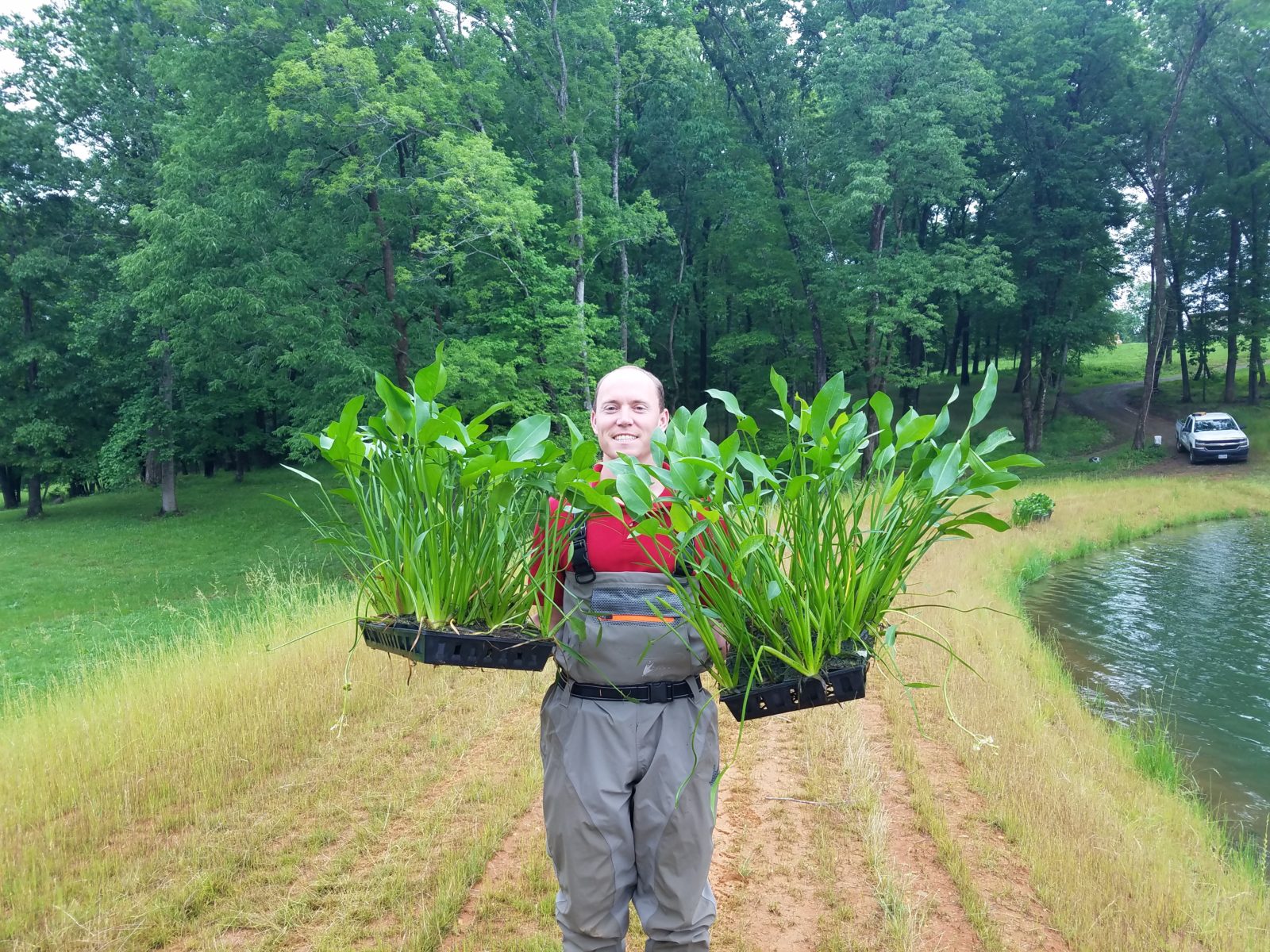
6 Recommended Vegetation Species To Plant Around Your Lake or Pond
Maintaining dense beneficial vegetation around your lake or pond is extremely important for improving water quality, preventing erosion and controlling nuisance geese. Establishing buffer zones takes minimal effort and requires little maintenance. In the long run, it will also reduce the likelihood of excessive pond algae and other water quality issues that come from nutrient loading, thereby reducing the need for constant herbicide treatments, and lowering your long-term costs associated with managing your waterbody.
You will also benefit from proper buffer management by attracting insects, like dragonflies, that feed on mosquito larvae, thus helping to control mosquito populations in and around your pond. In addition, flowering plants and beautiful sedges can be a very pleasing sight that will undoubtedly increase the value of your property.
Here are some of our recommended, easy to maintain plants to add to your buffer:
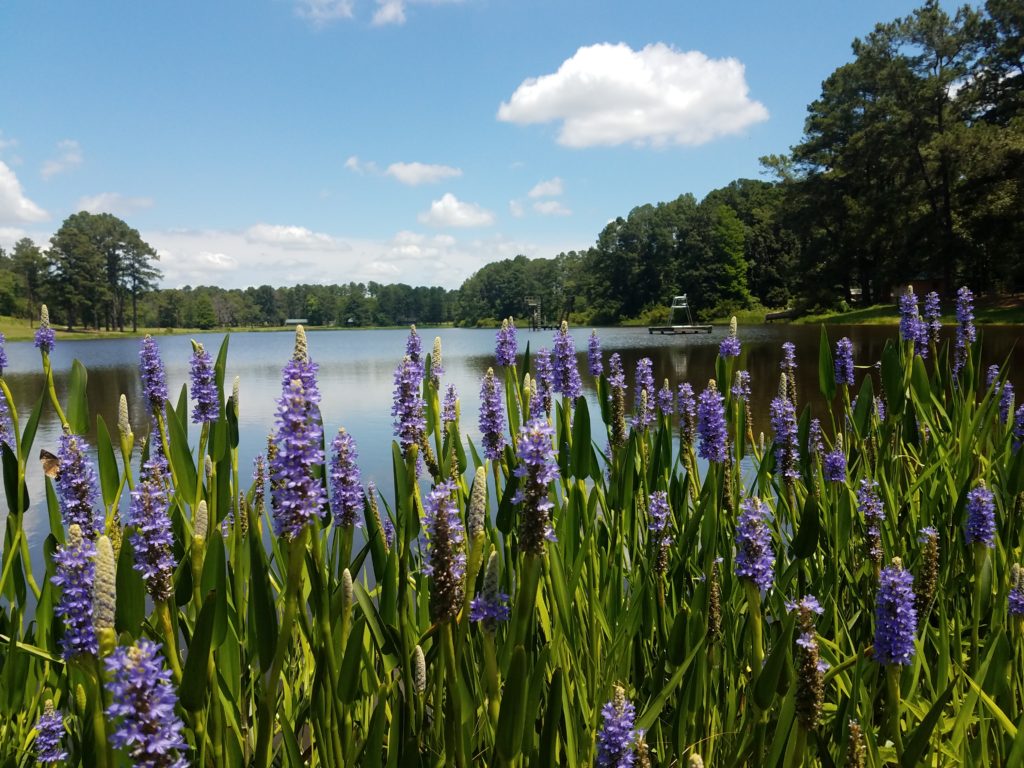
Pickerelweed (Pontederia cordata)
Pickerelweed is a swallow freshwater aquatic plant that grows three to four feet tall, but typically you only see one to two feet since about half of the plant is underground. This low growing perennial plant is ideal when low borders or water views are the goal. It has creeping underwater rhizomes with heart-shaped leaves and violet-blue spikes extending about the water. Its beautiful flowers attract bees and butterflies, as well as dragonflies, which consume mosquito larvae. Pickerelweed blooms from June through November and provides good cover for birds, fish and amphibians.
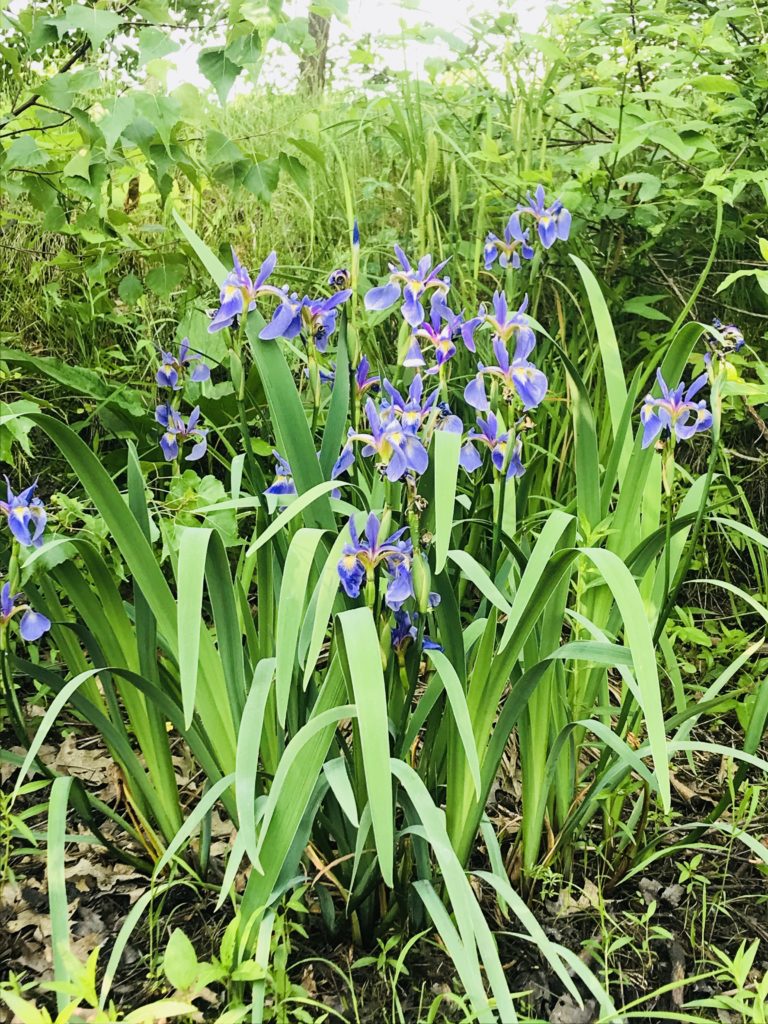
Blueflag Iris (Iris versicolor)
This clumping plant has several violet-blue flowers with yellow-based sepals that emerge on sturdy stalks among tall sword-like leaves. Their height is anywhere from 2 to 3 feet and they flower from May to August. They grow in swamps, marshes, and on wet shores and are often found in standing water. They have limited wildlife value, so they are resistant to being eaten by waterfowl and other animals.
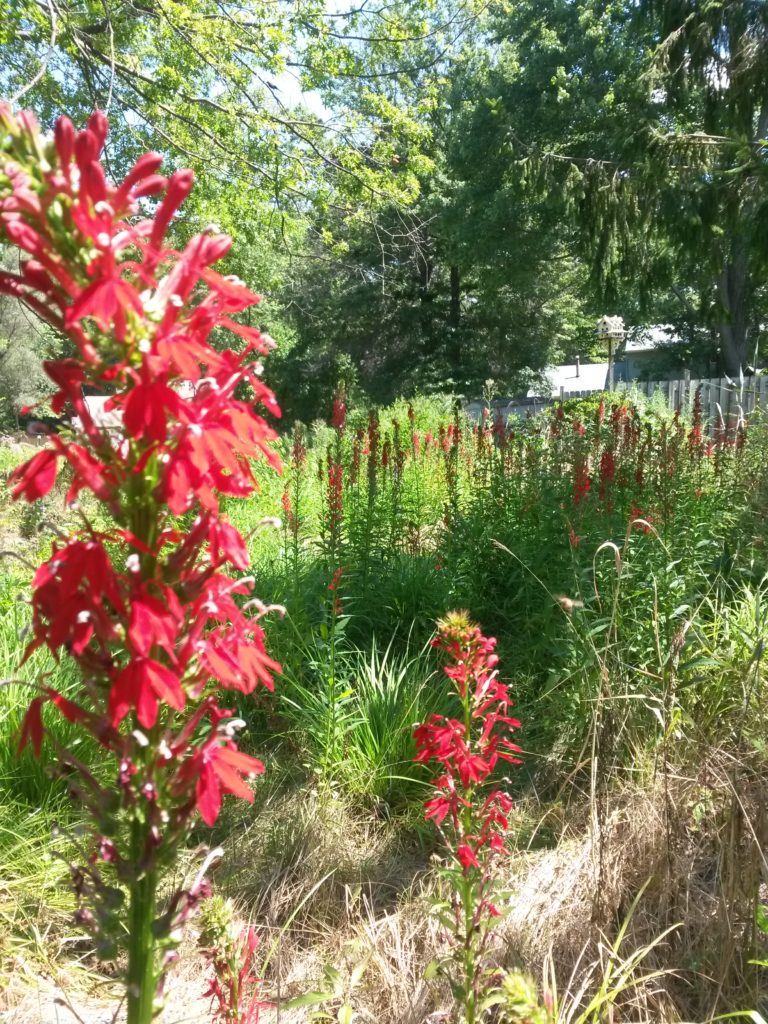
Cardinal Flower (Lobelia cardinalis)
Another plant that not only looks pretty, but attracts butterflies and even hummingbirds with its nectar supply is the cardinal flower. This plant has many brilliant red, tubular flowers in an elongated cluster on an erect stalk. It grows from 2 to 5 feet in damp sites, especially along streams, and flowers from July to October. It grows in damp sites, especially along streams.
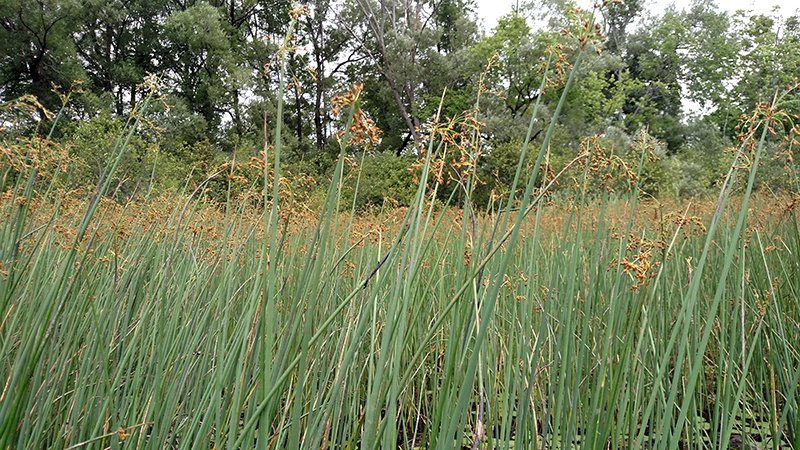
Native sedges and rushes
There are many grass-like aquatic sedges and rushes such as bulrush and soft rush. Sedges have triangular stems and grow in shallow water, while rushes have cylindrical stems and grow in clumps. These plants can be expected to spread, but are not aggressive. Their shallow spreading surface roots hold shoreline soil and reduce erosion. You will find that they only need controlling once per year or less. You will also probably find that these plants will reduce problems with more aggressive and invasive aquatic plants. Rushes and sedges are great habitat for wading birds and your shoreline will look more natural and attractive, too.
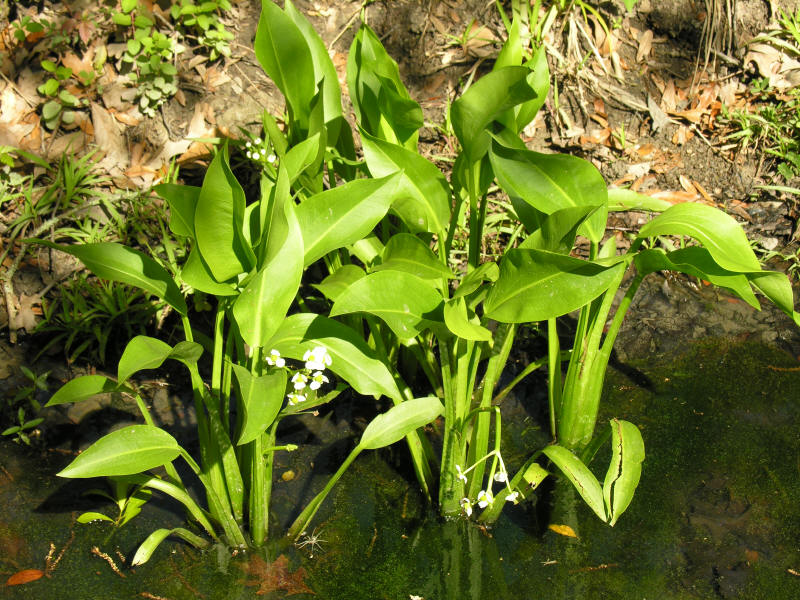
Arrowhead or Duck Potato (Sagittaria latifolia)
Duck Potato, or arrowhead, is a perennial that grows 1 to 4 feet tall and has large broad leaves shaped like arrows with small white flowers. It grows in wet sites or shallow water along lake and stream margins, marshes and swamps. The plant has strong roots and can survive through wide variations of the water level and displays an affinity for high levels of phosphates and hard waters. The underground tuber (duck potato) is preferred by at least 15 species of ducks, including canvasbacks, but many times the tubers are buried too deep for them to reach.
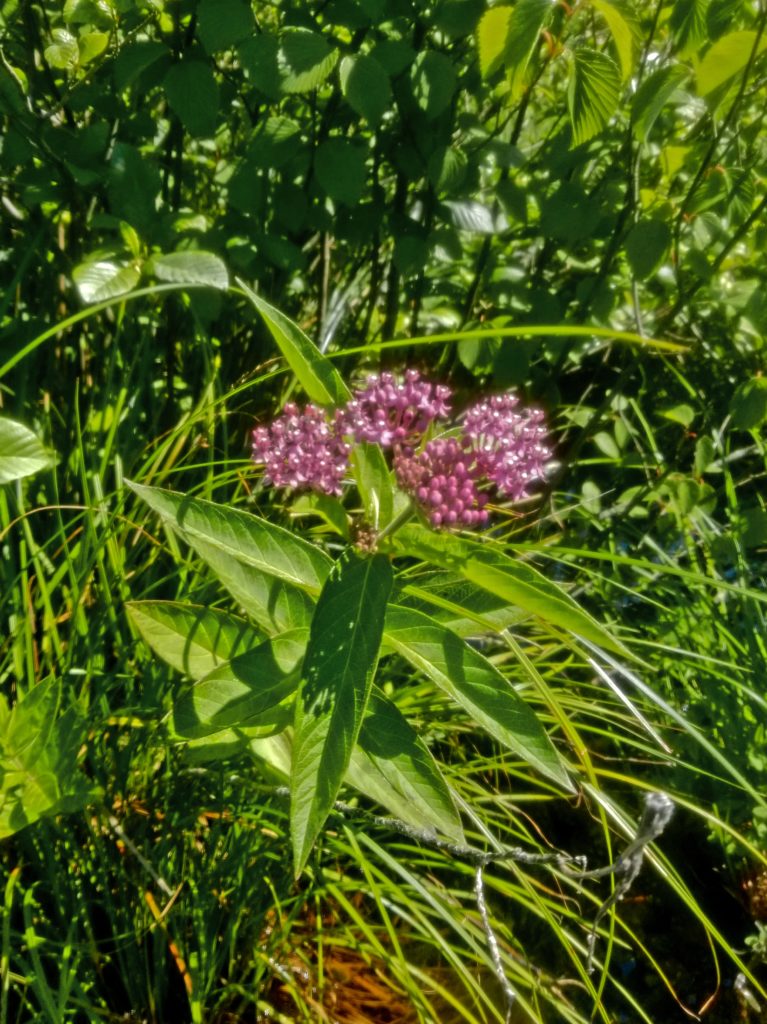
Swamp Milkweed (Asclepias incarnata)
This plant has slender leaves and deep pink flowers clustered at the top of a tall, branching stem. It grows to be 2 to 6 feet high with flowers from June to August. Milkweed grows in swamps, thickets and along wet shorelines and the flowers attract and provide food for butterflies, especially monarchs.
There are several beneficial plants besides the ones we highly recommended here. We encourage you to have beneficial plants added around your lake or pond if they aren’t already present to help improve water quality, prevent erosion among other important benefits. Just beware of certain undesirable or invasive plants such as cattails, phragmites, purple loosestrife, alligatorweed and smartweed as many of these have an explosive ability to spread and require extensive effort to manage.
6 Recommended Vegetation Species To Plant Around Your Lake or Pond
Contact your lake and pond management professional to help determine the best plant species for your area and look forward to those beautiful views and welcomed dragonflies, butterflies, and waterfowl!
SOLitude Lake Management is a nationwide environmental firm committed to providing sustainable solutions that improve water quality, enhance beauty, preserve natural resources and reduce our environmental footprint. SOLitude’s team of aquatic resource management professionals specializes in the development and execution of customized lake, stormwater pond, wetland and fisheries management programs that include water quality testing and restoration, nutrient remediation, algae and aquatic weed control, installation and maintenance of fountains and aeration systems, bathymetry, shoreline erosion restoration, mechanical harvesting and hydro-raking, lake vegetation studies, biological assessments, habitat evaluations, and invasive species management. Services and educational resources are available to clients nationwide, including homeowners associations, multi-family and apartment communities, golf courses, commercial developments, ranches, private landowners, reservoirs, recreational and public lakes, municipalities, drinking water authorities, parks, and state and federal agencies. SOLitude Lake Management is a proud member of the Rentokil Steritech family of companies in North America.









